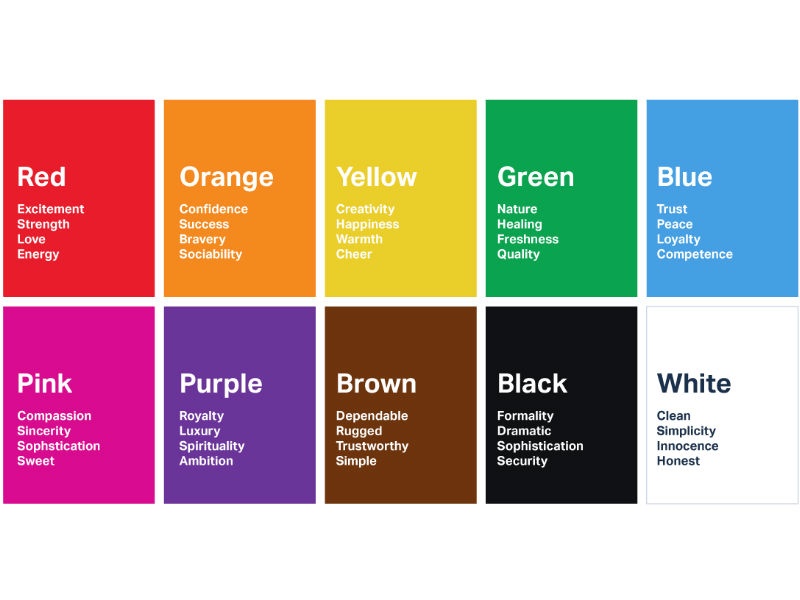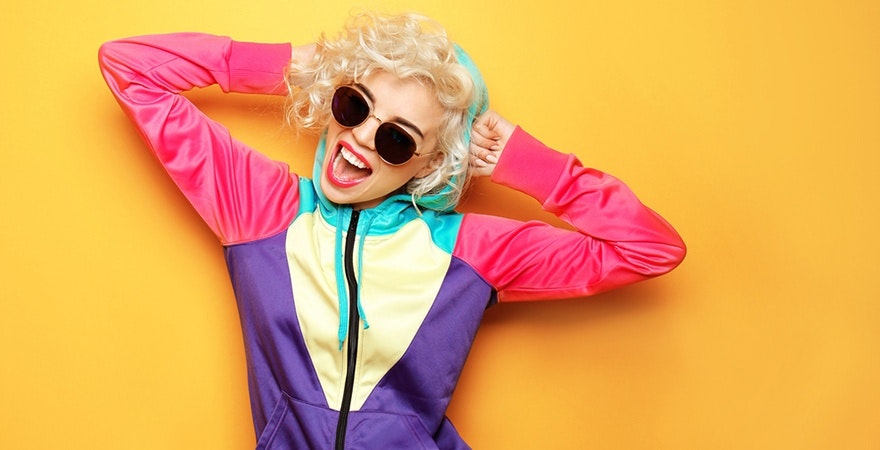“The Impact of Color Psychology: How Colors Shape Emotions” is an exploration of the profound influence colors wield over our emotional experiences. This article delves into the intriguing realm of color psychology, shedding light on how colors have the power to mold our feelings, perceptions, and behaviors.
Unveiling the Science Behind Color Psychology
Colors are not passive elements; they actively influence our emotions and mental states. To grasp the extent of their impact, it’s crucial to understand the scientific underpinnings that drive our emotional responses to different colors.
Decoding How Our Brains Perceive and Process Colors
The human brain possesses a remarkable ability to interpret and process colors, with distinct regions dedicated to various facets of color perception, such as hue, saturation, and brightness. This intricate neural network enables us to experience a wide spectrum of emotions linked to different colors, from the fiery passion of red to the tranquil serenity of blue.
Navigating the Influence of Evolutionary and Cultural Factors
The emotional responses elicited by colors aren’t random; they are deeply rooted in a complex interplay of biological, evolutionary, and cultural influences. Some reactions to colors are hardwired into our brains, such as the universal association of red with danger, while others are shaped by cultural backgrounds, resulting in diverse interpretations of colors across different societies.
Exploring Emotions Evoked by Specific Colors
This section delves into the emotional nuances associated with various colors, offering insights into the intricate psychology behind each hue.

Red: Eliciting Passion, Love, and Energy
Unraveling the Psychology of Red
Red is the color that ignites passion, love, and boundless energy. Its boldness commands attention and stirs desires, making it an emblem of fervent emotions.
When Red Takes a Dark Turn: Anger and Danger
Yet, red also possesses a darker facet. Its intensity can incite anger and danger, pushing emotions beyond the realm of passion into aggression and impulsiveness.
Blue: Cultivating Calmness, Trust, and Serenity
The Soothing Effect of Blue
Blue is synonymous with tranquility, trust, and serenity. It induces a sense of stability and reliability, earning its reputation as a color associated with trustworthiness.
Balancing Act: Navigating Blue’s Potential Drawbacks
However, an excess of blue can create emotional distance, potentially engendering feelings of aloofness and detachment. This underscores the importance of maintaining equilibrium when dealing with color psychology.
Yellow: Sparking Happiness, Optimism, and Creativity
Harnessing the Uplifting Power of Yellow
Yellow radiates positivity, optimism, and boundless creativity. It exudes a sunny disposition, uplifting our spirits even during the gloomiest of days.
Exercise Caution: Contending with Yellow’s Overwhelming Aspects
Nonetheless, an overdose of yellow can lead to overwhelming sensations and provoke anxiety. As with all colors, moderation is essential to fully appreciate its emotional benefits.
Green: Striking a Balance of Harmony and Nature
Green as a Beacon of Harmony
Green symbolizes equilibrium, harmony, and the serenity of nature. It fosters a sense of tranquility and rejuvenation, encouraging us to reconnect with the natural world.
The Dual Nature of Green: Harmony and Envy
Yet, green is not devoid of complexities; it can also be linked to envy and inexperience, serving as a reminder that even the most harmonious colors harbor shades of complexity.
Purple: Embodying Luxury, Creativity, and Spirituality
Unveiling the Regal Allure of Purple
Purple is the color of opulence, creativity, and spirituality. It exudes a sense of extravagance and stimulates imaginative expression, often associated with royalty and elegance.
Purple’s Enigmatic Charm
However, purple’s mystique can teeter on the precipice of ambiguity. It possesses the capacity to soothe and intrigue simultaneously, inviting varied interpretations.
Orange: Fueling Enthusiasm, Warmth, and Vitality
Embracing the Vibrant Energy of Orange
Orange bursts forth with enthusiasm, warmth, and vitality. It radiates energy and excitement, making it a go-to choice for infusing life and dynamism into surroundings.
Proceeding Prudently: Navigating the Risk of Overstimulation
Nevertheless, excessive use of oranges can lead to overstimulation and restlessness. Striking the right balance is crucial to maximize its positive impact.
Pink: Emanating Love, Tenderness, and Femininity
The Gentle and Soothing Aura of Pink
Pink embodies love, tenderness, and femininity. Its gentle hue offers solace during moments of distress, nurturing empathy and compassion.
The Fine Line: Balancing Sweetness and Maturity
However, pink must be wielded with care, as excessive use can risk veering into excessive sweetness and immaturity, diluting its emotional resonance.
Black: Exuding Sophistication, Power, and Elegance
The Timeless Allure of Black
Black signifies sophistication, power, and elegance. It exudes a timeless charm that transcends fleeting trends, projecting an air of authority and refinement.
Navigating the Shadows: Acknowledging Black’s Dark Side
Nevertheless, black also carries the weight of its dark side, often associated with mourning, melancholy, and negativity. Achieving the right balance is paramount to harness its benefits without succumbing to its pitfalls.
White: Embracing Purity, Simplicity, and Cleanliness
White’s Pristine Appeal
White represents purity, simplicity, and cleanliness. It serves as a blank canvas, symbolizing fresh beginnings and untarnished purity. In the realms of design and fashion, white embodies minimalism and sophistication.
The Sterile Connotation of White
However, white’s pristine aesthetic can sometimes evoke feelings of sterility and detachment. It may convey a sense of coldness or clinical aloofness, potentially deterring some from fully embracing its purity.
Brown: Grounded in Stability, Reliability, and Comfort
Finding Comfort in Brown’s Earthy Embrace
Brown is the color of stability, reliability, and earthly comfort. It provides a sense of grounding and warmth, offering solace amid the chaos of life.
Navigating Brown’s Delicate Balance: Comfort vs. Boredom
Nonetheless, brown’s association with comfort can occasionally border on monotony. Striking the right balance is crucial to infuse excitement into stability.
Applying Color Psychology in Everyday Life
With a deeper understanding of how colors influence our emotions, we can now explore practical applications in our daily lives.
:strip_icc()/bright-colorful-living-room-windows-plants-2hC9mXcR4G48aaah7cQ9qq-372d8cbc70ce4e2e81f9fca97a4f8f03.jpg)
Home Décor: Crafting Emotionally Charged Spaces
- Bedroom Bliss: Selecting Colors for Relaxation
- Living Room Energy: Using Colors for Sociability
Fashion Choices: Dressing to Evoke Emotions
- Power and Confidence: Embracing the Elegance of Black
- Radiating Positivity: Building a Yellow and Pink Wardrobe
Marketing and Branding: The Vibrant World of Business
- Fast-Food Frenzy: Leveraging Red and Yellow Strategies
- Building Trust: Utilizing Blue and Green in Corporate Branding

Conclusion
“The Impact of Color Psychology: How Colors Shape Emotions” demonstrates that colors are not mere visual aesthetics but potent tools that influence our emotional well-being. Armed with this knowledge, we can make informed choices in fashion, home design, and even marketing strategies. Embrace the powerful role that colors play in shaping our emotions and let it guide you towards a more vibrant and emotionally resonant life.